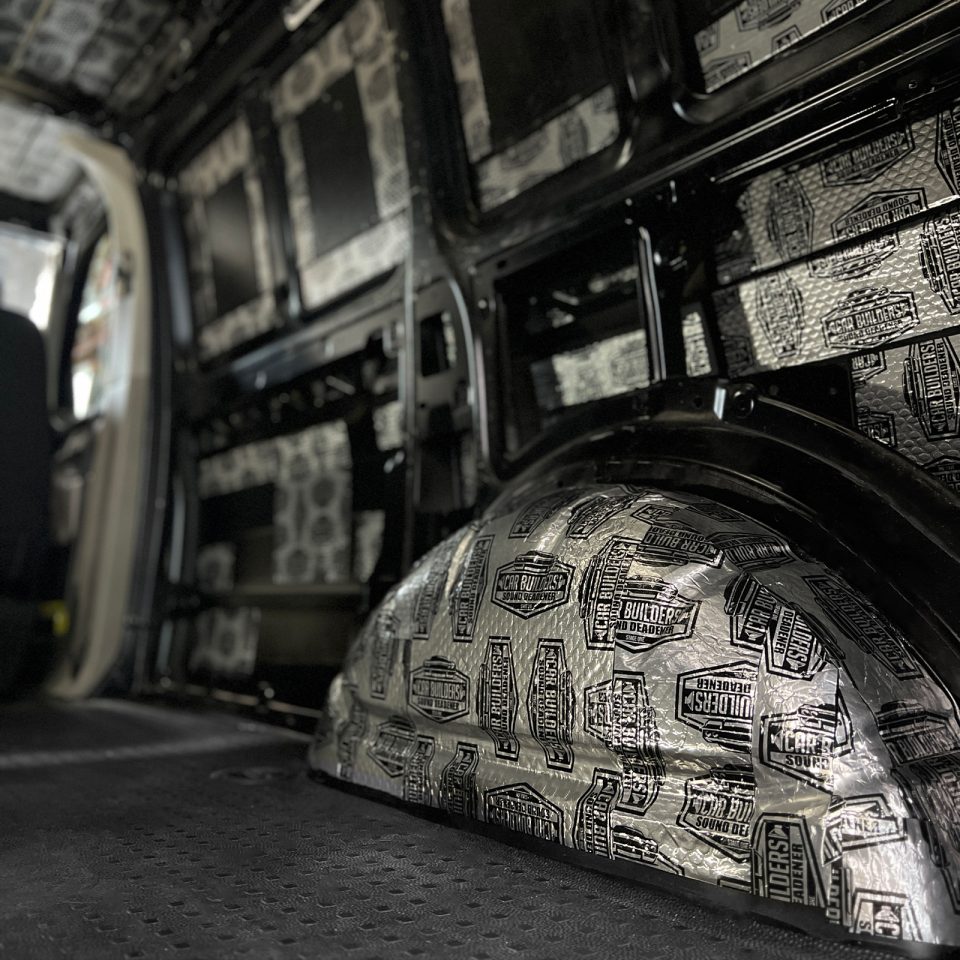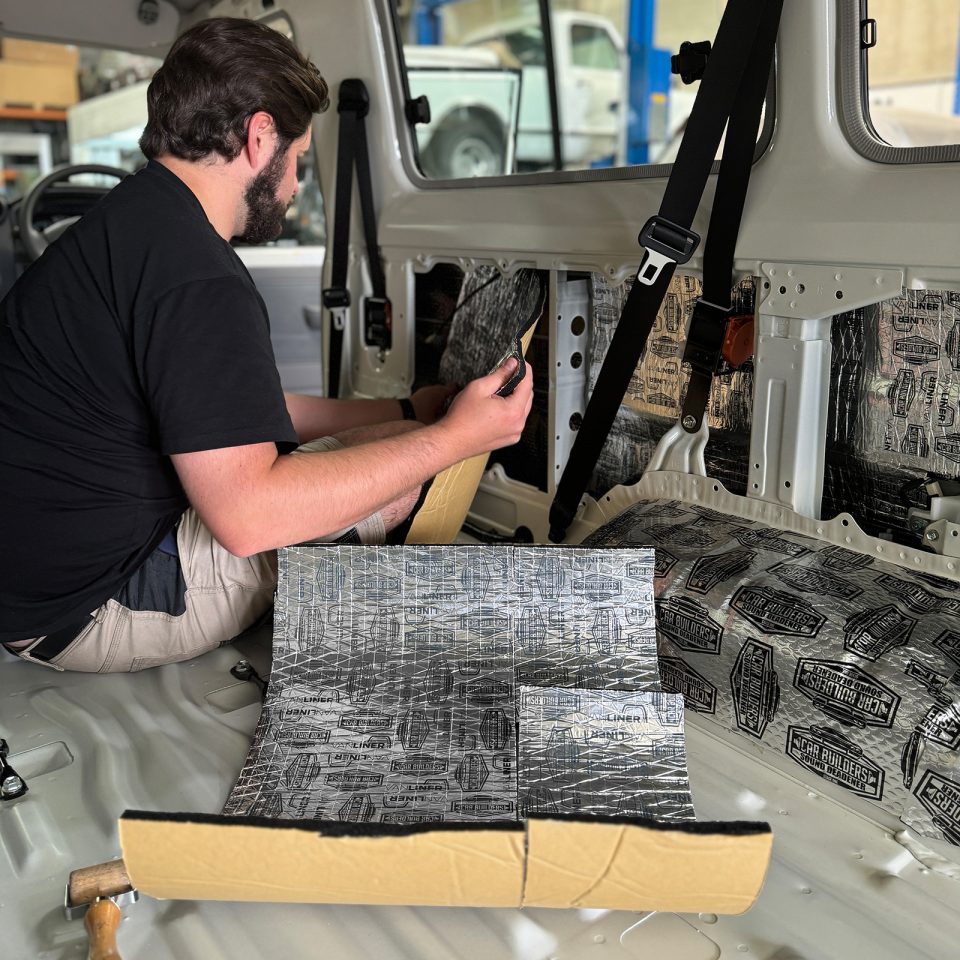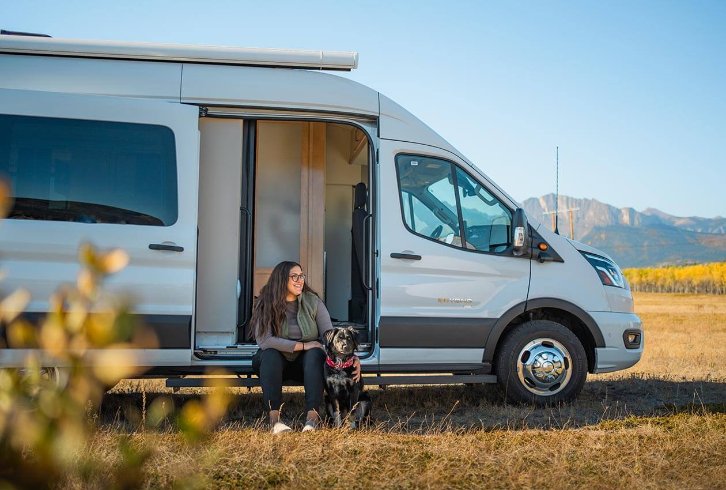Contents
When it comes to van conversion, insulation is one of the most critical steps in ensuring your van is comfortable, no matter where your travels take you. Whether you’re exploring the chilly mountains or cruising through the heat of the outback, proper insulation will regulate the temperature inside your van, keeping it cozy in the winter and cool in the summer.
But insulation is about more than just temperature control—it also helps reduce noise, improves energy efficiency, and creates an overall more comfortable living space.
That being said, let’s talk about van insulation and explore the different types of insulation materials and methods you can use, including liners, seals, and tapes. By understanding these options, you’ll be better equipped to create an insulated van that suits your needs.
Why Insulation is Essential for Van Conversion

The purpose of insulating your van is to create a barrier between the inside of your vehicle and the external environment. Without insulation, the metal structure of your van can conduct both heat and cold, leading to uncomfortable temperatures and condensation buildup. Proper insulation can make all the difference, ensuring you stay comfortable no matter the weather outside.
Good insulation has several benefits:
- Temperature regulation: Keeps the inside of the van warmer in cold climates and cooler in hot climates.
- Noise reduction: Helps to block out external sounds, making it easier to sleep and relax.
- Energy efficiency: With proper insulation, you’ll use less energy for heating and cooling, reducing the strain on your power system.
- Condensation prevention: Insulation helps prevent condensation, which can lead to rust and mold if left unchecked.
Types of Insulation

When insulating a van, there are different methods and materials you can use to achieve a well-insulated space. Below, we’ll explore three key options: liners, seals, and tapes. Each of these plays a different role in the insulation process and can be used together to create a comprehensive system.
1. Liner Insulation
Liner insulation refers to large panels or rolls of insulation material that are installed on the walls, roof, and floor of your van. This type of insulation acts as the primary barrier against heat and cold, providing full coverage of the interior surfaces.
Common liner materials include:
- Reflective foil insulation: This is a popular choice for van conversion because it reflects radiant heat, keeping the van cooler in the summer and warmer in the winter. It’s lightweight and easy to install but may need to be paired with other materials for more effective insulation.
- Fiberglass insulation: Known for its excellent insulating properties, fiberglass is a more traditional insulation material. However, it can be tricky to install in a van due to its thickness, and it’s not as moisture-resistant as other options.
- Foam board insulation: Rigid foam boards are an excellent option for van walls and ceilings. They’re lightweight, moisture-resistant, and provide a solid layer of insulation. Foam boards are easy to cut to size and fit within the van’s interior frame.
- Spray foam insulation: Spray foam is highly effective for filling gaps and ensuring that every nook and cranny of your van is insulated. It expands as it dries, providing a tight seal. While it offers excellent insulation, it’s a more permanent solution and can be messy to apply if you’re not experienced.
Liners provide the foundational insulation for your van and are the first layer in creating a comfortable, temperature-controlled space.
2. Seal Insulation
Seal insulation focuses on closing off any gaps, cracks, or seams in your van where air or moisture could leak in or out. Sealing these areas is crucial for ensuring that your insulation works effectively, as even the best liners won’t perform well if air can easily escape or enter the van.
There are several types of sealants commonly used in van conversions:
- Silicone sealants: These are ideal for sealing small gaps or cracks around windows, doors, and roof vents. Silicone is flexible, waterproof, and resistant to temperature changes, making it a reliable option for long-term use.
- Foam sealants: Expanding foam sealants are great for filling larger gaps and cavities that silicone can’t cover. Foam expands as it cures, creating a tight, insulating seal that blocks drafts and prevents moisture from seeping in.
- Rubber seals: Rubber seals are often used around doors and windows to prevent air leaks. They create a tight barrier when the doors are closed, helping to maintain a consistent internal temperature and reduce noise.
Sealing the van properly ensures that your liner insulation can do its job, maximizing the efficiency of your overall insulation system. Don’t skip this step—it’s key to maintaining temperature control and preventing drafts.
3. Insulating Tapes
Insulating tape is another valuable tool in the van conversion insulation process. While tapes won’t provide the same level of insulation as liners or seals, they’re essential for reinforcing areas where additional protection is needed, especially at seams, joints, and edges.
There are a few types of tapes commonly used in van insulation:
- Foil tape: Foil tape is often used with reflective insulation to seal joints and seams between insulation panels. It’s heat-resistant and helps to reflect radiant heat, keeping your van cooler in hot weather.
- Thermal tape: This tape can be applied to areas where additional insulation is needed, such as around window frames or edges of insulation panels. It helps to reinforce the insulation and ensures that gaps between materials are covered.
- Waterproof tape: For areas prone to moisture exposure, such as around roof vents or plumbing fixtures, waterproof tape adds an extra layer of protection. It prevents water from seeping in and damaging your insulation materials.
Tapes are typically used as a supplementary layer to reinforce your primary insulation and ensure there are no weak spots where air or moisture can penetrate.
Choosing the Right Insulation for Your Van

The best insulation for your van depends on several factors, including the climate you’ll be traveling in, your budget, and the level of comfort you’re aiming for. In many cases, using a combination of liners, seals, and tapes will give you the best results, as each type of insulation addresses different aspects of temperature and noise control.
- For hot climates: Reflective foil and foam board insulation are excellent choices to block out the heat and keep the van cool.
- For cold climates: Spray foam or fiberglass insulation offers superior warmth retention, making it ideal for colder weather.
- For mixed climates: A combination of reflective and foam board insulation paired with silicone seals and thermal tape can provide year-round comfort.
Final Thoughts
When converting a van, insulation is one of the most important investments you can make. It improves not only your comfort but also the functionality of your van, making it suitable for a wider range of environments. By using a combination of liners, seals, and tapes, you can create an efficient, well-insulated space that keeps you cozy, quiet, and ready for any adventure.

